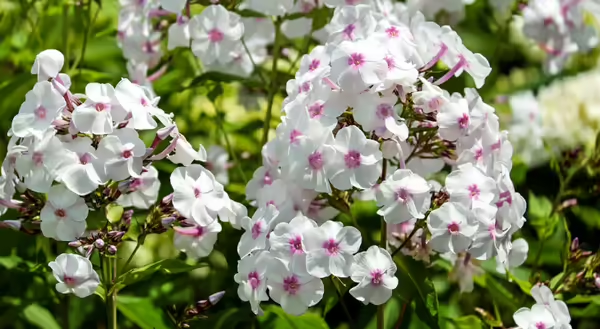
While designing a perennial flower bed, remember to add personal favorites, and throw out “garden design rules” that don’t fit your vision. Some of the plants I choose are favorites because they are tough, dependable, and beautiful.
blue false indigo (Baptisia australis)
Native to Illinois and deer and rabbit resistant, the 3 to 4 foot tall blue-green foliage adds great color and texture to the garden. It grows best in full sun and moist, well-drained soil. But once established, blue false indigo is drought tolerant. Purple lupine-like flowers appear in June. Newer varieties have various shades of flowers. Dried seed pods add beautiful texture to the garden during the summer.
catmint (Nepeta x faassenii)
Catmint makes an excellent border plant, reaching 18 to 24 inches tall and 30 inches wide. Fragrant blue-gray foliage forms loose mounds. Blue or white flower spikes adorn the plant from May to August and are popular with bees especially. This plant thrives in the summer heat and is drought tolerant once it is established. To keep catmint looking tidy after it blooms, cut the foliage back by half.
garden phlox (Phlox paniculata)
This clump-forming perennial reaches 3 to 4 feet high, adding height and structure to gardens. Large clusters of flowers appear on upright stems from July to September. Bloom colors include white, pink, purple, red, and even bi-colors. Remove spent flowers to extend the bloom period. Prune for good air circulation to prevent powdery mildew. Newer varieties are more resistant. Plants may need some staking for support when in bloom.
hardy hibiscus (Hibiscus mosheutos)
Hibiscus is a tropical-looking plant that is a perennial in Illinois. Varieties reach various heights (2-8 ft), and present various colors of foliage (green or purple) and blooms (white, pinks, purples, red). Dinner plate-sized flowers bloom July-September. Fertilize with a balanced fertilizer (10-10-10) in the spring for optimal growth and blooms. Hibiscus grows well in wet areas in full sun to partial shade. Though long-lived, it is very late to emerge in the spring, which causes many to think it died over the winter.
liatris (Liatris spicata)
A vertical habit and fine-textured foliage add a unique shape and texture in the garden. When grown in moist, well-drained soil, liatris will grow 2 to 3 feet tall and may need some staking to keep upright. The flower spikes open from the top down in July and August, and can be found in lavender, purple or white varieties. These bright, nectar-rich flowers attract butterflies and hummingbirds to the garden too.
Try your hand at designing a mixed perennial bed or border in your backyard with some of my favorites mixed in with yours, and you will enjoy them for years to come. For more information about perennial plants, visit University of Illinois Extension's Gardening with Perennials website at extension.illinois.edu/perennials/